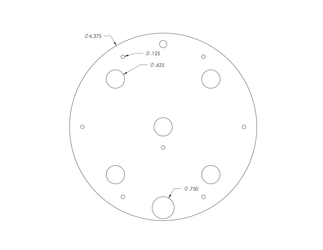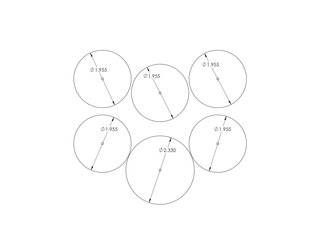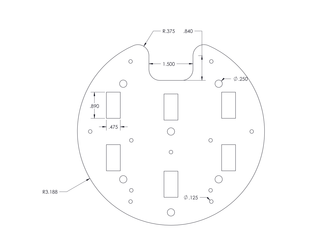CVC Design
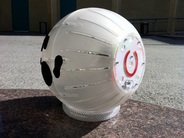
Our CVC on its stand
The obvious mechanical design choice that we made to complement our main sensing mode (an accelerometer) was to use a 13" chinchilla ball to house everything. We hot-glued foam pads over the force sensitive resistor on both sides, and made finger cut outs as a guide for the user. We put a button under the thumb pad (this button changes flips the motors; left becomes right and right becomes left). For full details of the sensing modes, see the Sensing Inputs page. For the circuitry used in the CVC, see our CVC Electronics page. For the software running on the CVC, see our CVC State Machines and Code pages.
Faceplate
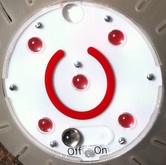
CVC's face plate
The faceplate is used to indicate atoll captures, as well as the team color. We first started by using LEDs to indicate colors, however, we found that LEDs were terrible in sunlight. Servos with color wheels were instead used in conjunction with acrylic lenses. This allows for the vibrant color wheel to show in any light (except for the dark of course). Also on the faceplate is the amazing kill switch associated with the CVC. The switch is just a slot that has a magnet that sits at two positions marked by steel nuts behind the plastic (see the videos below). One of the positions has a reed switch that turns on the CVC. Below are the Solidworks drawings used to cut out the face plate, the servo plate, and the color wheels.
Atoll capture demo
On/Off switch demo
SolidWorks drawings
Here are the SolidWorks drawings for the faceplate, the color disks (attack to servo), and the servos support plate.
